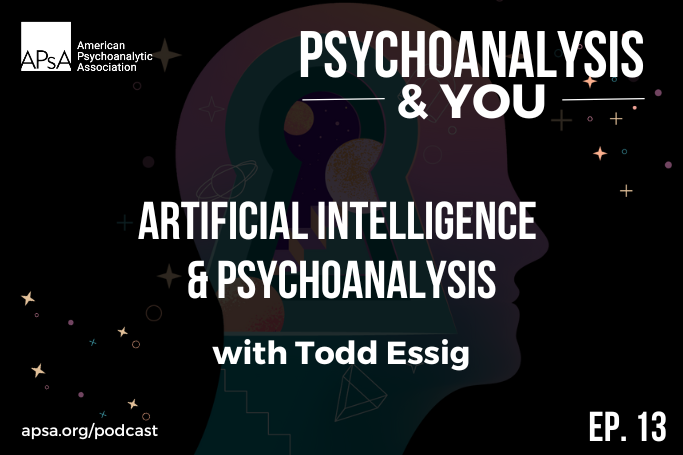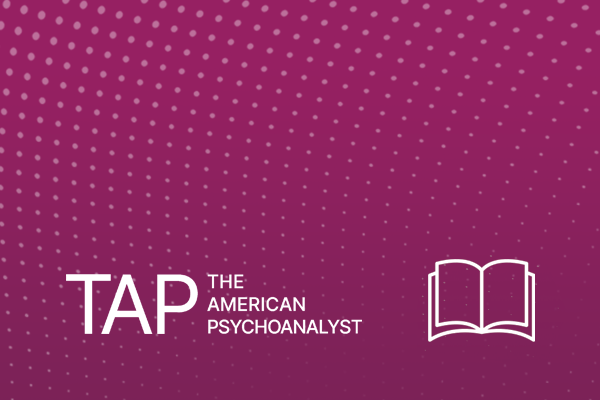The New Other: Alien Intelligence and The Innovation Drive
Forthcoming in 2025 from Karnac Books
Humanity has engineered a new Other. Sometimes referred to as a “digital species,” other times as “alien intelligence,” AI is the first technology with the capacity to “contain” our psychic data, exceed our intelligence and, potentially, our states of consciousness. It is our creation. From a psychoanalytic perspective—our “symptom.” What does this symptom reflect? In her soon to be released book, The New Other: Alien Intelligence and the Innovation Drive, Dr. Amy Levy argues that AI is the product of our innovation drive, a master psycho-evolutionary drive within humanity that turns our desires and needs into technological reality. She explores the problems we are trying to solve with AI, and our chances of success. The book studies AI companions, such as therapy bots, boyfriend/girlfriend bots, and Large Language Models (LLMs) such as ChatGPT and Claude, paying close attention to their influence on our minds and relationships. Using Bionian theory, she analyzes these new containers and exposes the seismic impact of their emergence. Though we do not like to think about it, or to conceive of it this way, humanity is becoming increasingly reliant on AI containers as our new fount of wisdom, meaning, and life direction, while the humanist worldview that backs psychoanalysis is receding. Among many pertinent questions addressed by the book are: How do we feel about these developments and how do we respond? What might it mean to mourn humanism, and if we do, what might await us on the other side?
“The Death of Humanism” Chapter 5 (excerpt)
Freud’s Humanist education enforced the memorization of great literary works. A practice that allowed one to step into the mind of another human for educational enrichment, etching human wisdom into one’s self, and trying on another’s movement of thought. Holding onto the handle bars and feeling the ride without exerting effort allows one to sense into a potential and so expand our own. This too is a premise of psychoanalysis. One more developed mind engaging another’s, inviting it into new pathways of experience by lending our own. Today, increasingly, the other who expands the pathway is not human. What will we learn from it? And how will our internalization of its modes of processing us change our minds? Possati (2021) believes that AI is a post-human unconscious, shaping the human unconscious while also producing a new form of unconscious. We need, he argues, to understand and explore this unconscious to “truly understand who we have become” (Possati, 2021, p. 24).
It is not a new notion to think of ourselves as transformed by non-human containers. Bollas (2008) has written about the interplay of our idiom and objects in our surround, arguing that we affect the object world, while we are also transformed by real objects. Bollas maintains that real objects may function as living containers for important parts of a subject’s psychic life. These objects come alive because they are simultaneously personifications of inner life —receptacles of memories, desires, impulses, as well as ways of thinking, representing, and fantasizing — and constituted by their own intrinsic characteristics.
I will never forget a summer night in 1994 when my young-adult-self went to see the hard rock band ‘Soundgarden’ playing live. The lights turned a dark blue on the smoky stage of the Amphitheatre in Menlo Park, California where I stood (completely sober) with my best friend watching one of our favorite groups. As the slow bass guitar intro to their new song ‘4th of July’ began and I heard Chris Cornell’s baritone voice ring the dark poetic lyrics into the mic, “Shower in the dark day, clean sparks diving down, Cool in the waterway where the baptized drown, Naked in the cold sun, breathing life like fire…” I experienced a rush of feeling unlike anything I had known. Listening to his words and experiencing their music felt like recognition, as though the band knew just what I needed and at the same time, I was discovering a need which had been dormant until that moment. The performance took off with the guitars, bass, drums and synthesizer delivering their respective contributions to the chorus: “I heard it in the wind, And I saw it in the sky, I thought it was the end, I thought it was the 4th of July” Elated, I thought: ‘This song is me! Anyone who ever wants to know me just has to listen to this song and they will know everything.’ I rocked out next to fans who were having, I knew, a more appropriately measured response to this ‘mellow’ rock song.
For the purposes of this discussion, rather than pursue the more clinical path of understanding the stuff of my personal transformation (what I was gaining access to via the song), we might ask: What was the nature of the thing that transformed me? Though Chris Cornell composed some evocative lyrics and the rest of the band created a strong emotional mood, without the powerful sound system, instruments, smoke machine, blue lights, massive crowd and summer air, I am certain I would not have been transformed. The meeting of words, musicians, a large body of humans joined outside together, along with technology in that particular moment of my life gave way, I believe, to a personal ‘transformation in O’. Neither Soundgarden nor the amphitheater contained my beta elements in the sense of actively receiving and transforming a projective identification, and yet, this felt like a transcendent transformation. What was the container? More than a single object, I believe the container may have been formed by the unique the constellation of elements in the concert experience: the song, the night, the crowd, the technology may have collectively generated a container which I along with the other concert spectators then entered. What we experienced within it was as unique as each of us; the result of our inner contributions and associations to the container elements.
While this happens to many of us to some degree when listening to live music, observing art, attending the theatre, going to the movies, scrolling internet posts, and other moments during which we invest ourselves into technologically mediated environmental containers, my sense is that such moments are changing, becoming less products of our inner life at intersection with objects, and increasingly technologically induced states of mind. Though in the 1990s we drove cars, used hot tubs, played video games and rode in airplanes, technological objects were milder containers of transformation. Today, whether as a direct result of AI interaction, or more general digital technology, we constantly find ourselves psychically and emotionally ‘contained’ by some form of aggressively immersive technology.





